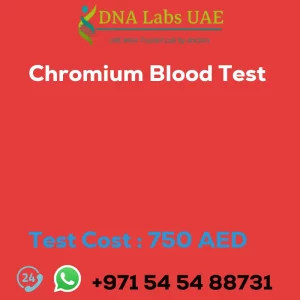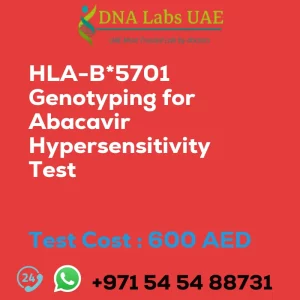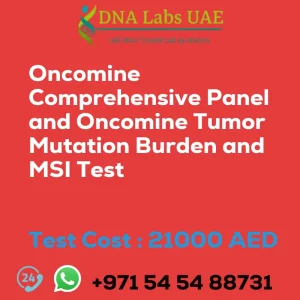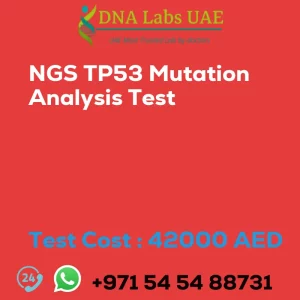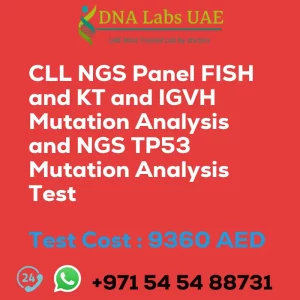Fine Needle Aspiration Cytology – Procedure with Reporting Test
Test Cost: AED 600.0
Symptoms Diagnosis: NA
Referring Details:
- Test Name: Fine Needle Aspiration Cytology – Procedure with Reporting
- Test Components: NA
- Price: 600.0 AED
- Sample Condition: FNAC slides
- Report Delivery: 2 days
- Method: Cytology
- Test Type: Genetics
- Doctor: Oncology
- Test Department:
Pre Test Information: Fine Needle Aspiration Cytology – Procedure with Reporting can be done with a doctor’s prescription. Prescription is not applicable for surgery and pregnancy cases or people planning to travel abroad.
Test Details
Fine needle aspiration cytology (FNAC) is a diagnostic procedure used to obtain cells from a suspicious lump or mass in the body for examination under a microscope. It is a minimally invasive procedure that can be performed in an outpatient setting.
Procedure:
- Patient Preparation: The patient is usually positioned in a comfortable position, depending on the location of the lump or mass. The skin over the area is cleaned with an antiseptic solution.
- Local Anesthesia: A local anesthetic may be injected to numb the area and minimize discomfort during the procedure. In some cases, especially if the lump is deep-seated or in a sensitive area, ultrasound or CT guidance may be used to ensure accurate needle placement.
- Needle Insertion: A thin needle attached to a syringe is inserted into the lump or mass. The needle may be moved back and forth or rotated gently to obtain an adequate sample of cells. Multiple passes may be made to increase the chances of obtaining a representative sample.
- Sample Preparation: The aspirated material is expelled onto glass slides or preserved in a fixative solution. The slides are then stained with special dyes to enhance cell visualization under a microscope.
- Microscopic Examination: The stained slides are examined by a pathologist or cytotechnologist under a microscope. They look for abnormal or cancerous cells, cellular architecture, and other features that may help in making a diagnosis.
Reporting:
After the microscopic examination, a report is generated which includes the following information:
- Clinical History: This includes relevant patient information, such as age, sex, medical history, and presenting symptoms.
- Procedure Details: The details of the procedure, including the location and nature of the lump or mass, the technique used, and any complications encountered.
- Cytological Findings: This section describes the cellular characteristics observed on the slides. It includes information about the presence or absence of abnormal cells, their morphology, cellular arrangement, and any other relevant features.
- Interpretation: The pathologist or cytotechnologist provides an interpretation of the findings, which may include a diagnosis, a provisional diagnosis, or a recommendation for further testing.
- Conclusion: This section summarizes the findings and provides a final impression or recommendation for clinical management.
It is important to note that FNAC is a diagnostic tool and not a definitive diagnosis. In some cases, further testing such as a biopsy or additional imaging may be required for a definitive diagnosis. The final diagnosis should be made in conjunction with clinical and radiological findings.
| Test Name | FINE NEEDLE ASPIRATION CYTOLOGY- PROCEDURE WITH REPORTING Test |
|---|---|
| Components | NA |
| Price | 600.0 AED |
| Sample Condition | FNAC slides |
| Report Delivery | 2 days |
| Method | Cytology |
| Test type | Genetics |
| Doctor | Oncology |
| Test Department: | |
| Pre Test Information | FINE NEEDLE ASPIRATION CYTOLOGY- PROCEDURE WITH REPORTING can be done with a Doctors prescription. Prescription is not applicable for surgery and pregnancy cases or people planing to travel abroad. |
| Test Details |
Fine needle aspiration cytology (FNAC) is a diagnostic procedure used to obtain cells from a suspicious lump or mass in the body for examination under a microscope. It is a minimally invasive procedure that can be performed in an outpatient setting. Procedure: 1. Patient Preparation: The patient is usually positioned in a comfortable position, depending on the location of the lump or mass. The skin over the area is cleaned with an antiseptic solution. 2. Local Anesthesia: A local anesthetic may be injected to numb the area and minimize discomfort during the procedure. In some cases, especially if the lump is deep-seated or in a sensitive area, ultrasound or CT guidance may be used to ensure accurate needle placement. 3. Needle Insertion: A thin needle attached to a syringe is inserted into the lump or mass. The needle may be moved back and forth or rotated gently to obtain an adequate sample of cells. Multiple passes may be made to increase the chances of obtaining a representative sample. 4. Sample Preparation: The aspirated material is expelled onto glass slides or preserved in a fixative solution. The slides are then stained with special dyes to enhance cell visualization under a microscope. 5. Microscopic Examination: The stained slides are examined by a pathologist or cytotechnologist under a microscope. They look for abnormal or cancerous cells, cellular architecture, and other features that may help in making a diagnosis. Reporting: After the microscopic examination, a report is generated which includes the following information: 1. Clinical History: This includes relevant patient information, such as age, sex, medical history, and presenting symptoms. 2. Procedure Details: The details of the procedure, including the location and nature of the lump or mass, the technique used, and any complications encountered. 3. Cytological Findings: This section describes the cellular characteristics observed on the slides. It includes information about the presence or absence of abnormal cells, their morphology, cellular arrangement, and any other relevant features. 4. Interpretation: The pathologist or cytotechnologist provides an interpretation of the findings, which may include a diagnosis, a provisional diagnosis, or a recommendation for further testing. 5. Conclusion: This section summarizes the findings and provides a final impression or recommendation for clinical management. It is important to note that FNAC is a diagnostic tool and not a definitive diagnosis. In some cases, further testing such as a biopsy or additional imaging may be required for a definitive diagnosis. The final diagnosis should be made in conjunction with clinical and radiological findings. |


